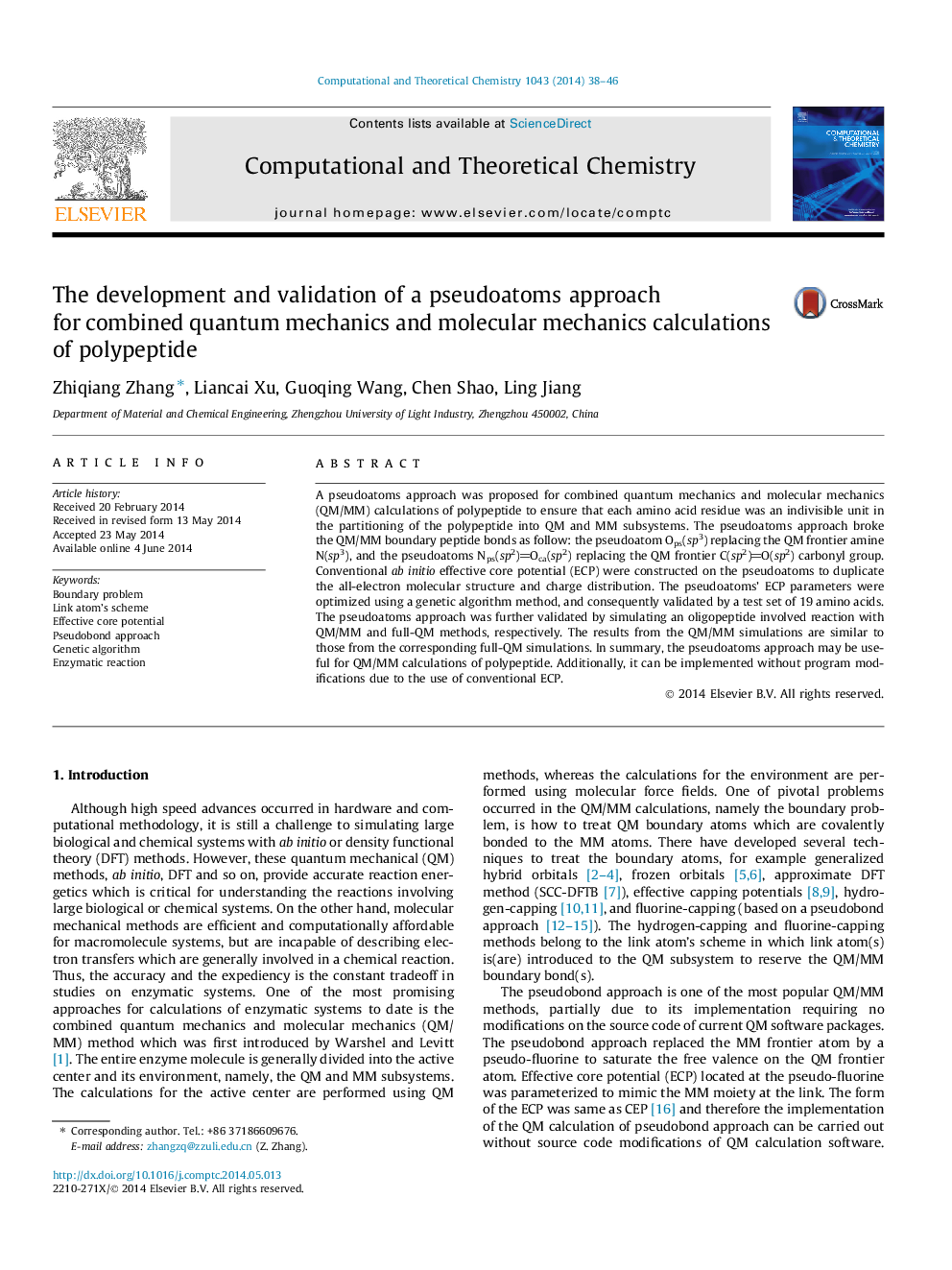| Article ID | Journal | Published Year | Pages | File Type |
|---|---|---|---|---|
| 5393607 | Computational and Theoretical Chemistry | 2014 | 9 Pages |
â¢We developed a pseudoatoms approach for QM/MM calculations of polypeptide.â¢It was developed by B3LYP method with 3-21G and 6-31G*, but not confined to B3LYP.â¢It can break the peptide bonds without obvious effects to the remaining structure.â¢The precision of pseudoatoms approach is similar to corresponding full-QM method.
A pseudoatoms approach was proposed for combined quantum mechanics and molecular mechanics (QM/MM) calculations of polypeptide to ensure that each amino acid residue was an indivisible unit in the partitioning of the polypeptide into QM and MM subsystems. The pseudoatoms approach broke the QM/MM boundary peptide bonds as follow: the pseudoatom Ops(sp3) replacing the QM frontier amine N(sp3), and the pseudoatoms Nps(sp2)Oca(sp2) replacing the QM frontier C(sp2)O(sp2) carbonyl group. Conventional ab initio effective core potential (ECP) were constructed on the pseudoatoms to duplicate the all-electron molecular structure and charge distribution. The pseudoatoms' ECP parameters were optimized using a genetic algorithm method, and consequently validated by a test set of 19 amino acids. The pseudoatoms approach was further validated by simulating an oligopeptide involved reaction with QM/MM and full-QM methods, respectively. The results from the QM/MM simulations are similar to those from the corresponding full-QM simulations. In summary, the pseudoatoms approach may be useful for QM/MM calculations of polypeptide. Additionally, it can be implemented without program modifications due to the use of conventional ECP.
Graphical abstractDownload full-size image
